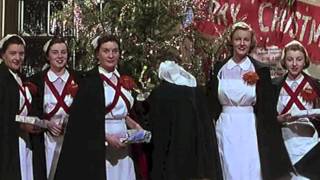Before reading this post, some people will already be concerned about the use of the word “Racist” in the blog title. To some, it sounds a warning alarm of liberal joyless dogma ahead. If you feel like this, please read on. If you don’t, please read on.
The following short clip from is taken from “Doctor in the House” (1954) which was the first in a successful series of comedy films based upon writings by Richard Gordon concerning medical students in college. The back-story to this particular clip is that a medical student, in the throws of passion with a young nurse, asks her to marry him. She accepts immediately (more about this in a later post). In the sober aftermath of his ejaculation he panics and asks his colleague for advice.
 Here is the clip.
Here is the clip.
I’m guessing that the majority of the viewers of this clip will be astonished, offended or at least amazed. Some may find it amusing, given that it is from the 1950s. There may even be people that find it genuinely amusing today! The chance of such viewers actually being here is unlikely because most of them will be too busy watching re-runs of “Love Thy Neighbour” and “Mind Your Language”.
Referring to this clip as “racist” will probably irritate a lot of people, particularly people who were around in the 1950s and maybe would even have found it funny at the time. But I’m not suggesting for a moment that these people are racist in the least, really! The world was different then. But if the same joke was injected into a 2013 comedy movie I’d suggest that the majority of those people would also agree this was “out of order”.
Let’s take the clip apart: Nurse Gullible proudly declares her joyous news to the other nurses who are busy looking the other way. They turn around revealing that they too have been asked to marry the young cad by revealing their ostentatious flowers. Nurse Gullible realises that it’s clearly not a serious engagement if he has also asked so many other nurses, of all shapes, sizes, and levels of attractiveness. And she sighs. That’s the joke – he asked all these misfits too – haha you’ve been fooled.
But this wasn’t enough for the producers – they thought they could take it a step further. Consequently, one of the nurses doesn’t turn around initially. It’s only after Nurse Gullible sighs that the black nurse turns around to deliver the final punch line: he even asked a black woman to marry him! Hilarious.
But the hilarity of his indiscriminate proposals was clearly not obvious enough to the makers of Doctor In The House so they felt the need to hammer the point home: after the black nurse turns around, she says “Me Too!”, grins, and nods in the cheery way that those dark types do. The audience is left in no doubt that this is the ultimate sign that the doctor was joking! No white doctor with Donald Sinden’s good looks would ever seriously ask a Darky to marry him! Even the Darky gets that. Hahah – we all laugh at the ludicrous notion. Well obviously we don’t – but the imaginary 1950’s audience supposedly did.
Now,it’s important to state (for the benefit of a certain section of the readership who bang on about political correctness all the time) that I still like this film. It also still makes me laugh – really! What’s more I’m also glad that the film airs in its entirety with the inclusion of this scene! Not because it’s funny or “harmless” or any of that Sun-reader bullshit, but because it is truly jarring for the majority of people watching in 2013. I’m hoping children are as befuddled as I was when I first saw it (back in the 1970s). And long may this clip remain offsensive – because all the while it does it means that society is a little less fucked than it once was.
On top of this, the black nurse is clearly nothing of the sort – rather a white girl blacked-up. A young child watching for the first time today would probably find that the weirdest aspect – why does she look so weird? That also suggests a more sinister and serious situation regarding casting at the time.
Oddly, that particular nurse (uncredited, obviously) does turn up earlier in the film and without exhibiting some sort of racial stereotype (beyond a ludicrous accent and being clearly a white woman blacked-up). One may even be mistaken for thinking this was a piece of pioneering filmmaking for the time – having an incidental black character without reference to her ethnicity – but then you have to remember she is only there as part of the setup to the brilliant “he even asked a Darky to marry him” joke later on.
We should continue to watch these films and enjoy them and be shocked by them. Binning them simply allows everyone to forget how far we’ve come, or rather how far behind we were then.